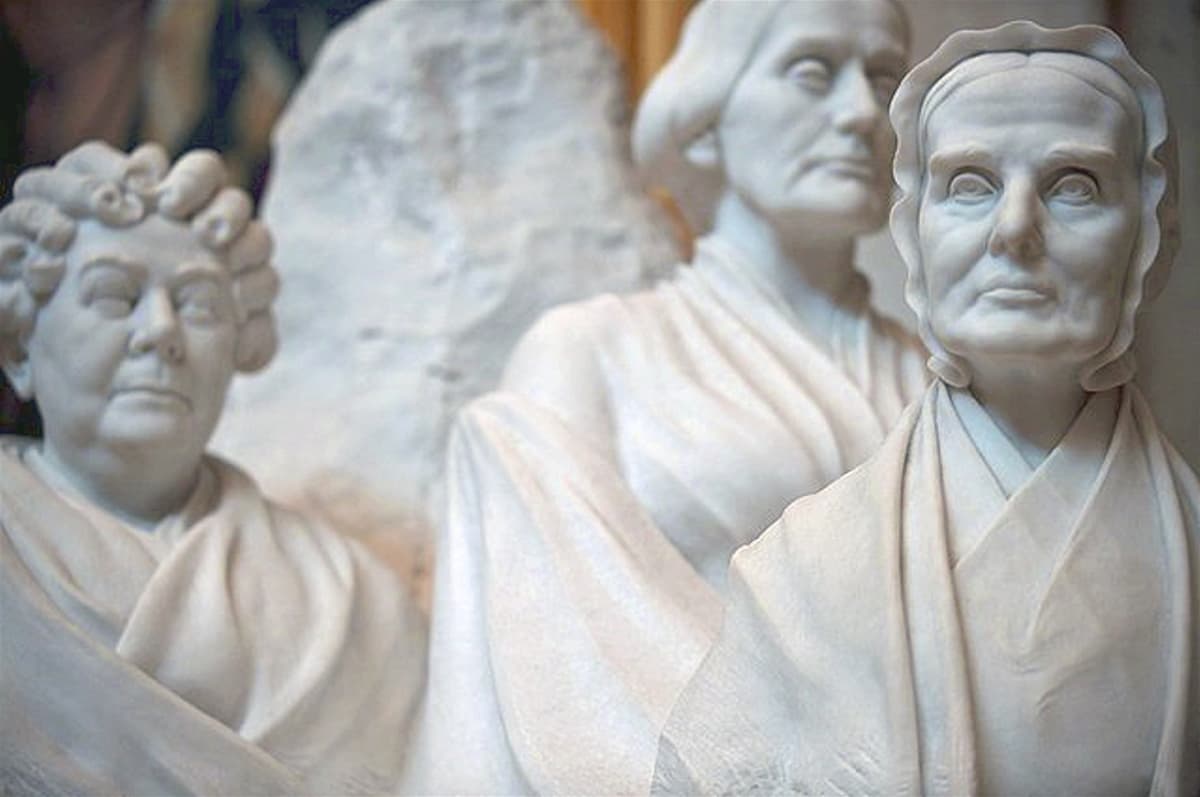Today, Elizabeth Cady Stanton (left), Susan B. Anthony (center), and Lucretia Mott feature prominently in the Rotunda of the U.S. Capitol. Together with 19th century suffrage pioneers Sojourner Truth, Samuel May, Abby Kelley Foster, Frederick Douglass, Lucy Stone, Victoria Claflin Woodhull, Frances Ellen Watkins Harper, Julia Ward Howe, and many others, they made enormous strides toward securing the ballot for women during Reconstruction and for years afterward. All would be long gone by the time Woodrow Wilson arrived on the political scene as Governor of New Jersey in 1911, declaring himself “strongly against” women voting. Wilson would continue to oppose the Susan B. Anthony Amendment through both his campaigns for the White House in 1912 and 1916, before finally reversing himself in 1918.
Credit: Architect of the Capitol.
Today, Elizabeth Cady Stanton (left), Susan B. Anthony (center), and Lucretia Mott feature prominently in the Rotunda of the U.S. Capitol. Together with 19th century suffrage pioneers Sojourner Truth, Samuel May, Abby Kelley Foster, Frederick Douglass, Lucy Stone, Victoria Claflin Woodhull, Frances Ellen Watkins Harper, Julia Ward Howe, and many others, they made enormous strides toward securing the ballot for women during Reconstruction and for years afterward. All would be long gone by the time Woodrow Wilson arrived on the political scene as Governor of New Jersey in 1911, declaring himself “strongly against” women voting. Wilson would continue to oppose the Susan B. Anthony Amendment through both his campaigns for the White House in 1912 and 1916, before finally reversing himself in 1918.
Credit: Architect of the Capitol.

